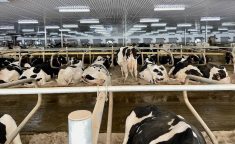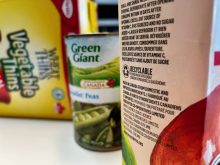The American dairy industry is clamouring for its federal government to slap retaliatory tariffs on Canada for what they say is policy restricting U.S. access to Canada’s dairy market.
At issue is Canada’s dairy tariff-rate quota (TRQ) allocation, which was the subject of a CUSMA (Canada-United States-Mexico Agreement) dispute panel last year.
TRQ holders are allowed limited access to Canada’s heavily protected and supply-managed dairy market by reducing or eliminating high import tariffs on some trade.
On May 16, Canada’s internal trade minister, Mary Ng, announced that Canada had published its new CUSMA dairy TRQ allocation and administration policies.
Jim Mulhern, president and CEO of the National Milk Producers Federation, accused Canada of thumbing its nose at the U.S. government and international treaty obligations in a news release the same day.
“Ottawa’s decision today is clearly designed to test our resolve by doubling down on its long-standing dairy trade violations… That decision demands retaliatory action by the U.S. government,” he said.
U.S. Secretary of Agriculture Tom Vilsack told viewers of a teleconference May 16 to “stay tuned.”
“I can assure you we are not going to give up on this,” he said.
Ng argues, however, that the new TRQ policy complies with CUSMA and addresses a shortcoming ruled as part of last year’s dispute settlement panel.
The panel found that, “Canada’s practice of reserving TRQ pools exclusively for the use of dairy processors is inconsistent with the agreement,” she said. “The new policies end the use of processor-specific TRQ pools.”
Instead, TRQs will be allocated based on historical market share to retailers and distributors on both sides of the border, a senior government official said May 17.
On its website, Global Affairs Canada announced the opening of the application period for the 2022-23 dairy year TRQs, as well previously unallocated quota under the 2022 CUSMA calendar year, starting on May 16. The application window closes June 15.
Dispute
Last year’s dispute panel was the first convened under CUSMA. The U.S. complained that Canada restricted access to Canada’s dairy markets by allocating all its TRQs to Canadian processors. Although processors were importing American dairy products, the U.S. dairy industry is pushing for direct access to the Canadian market rather than through its Canadian competitors.
The panel ruled in December 2021 that Canada’s TRQ policy contravenes CUSMA rules.
“Canada takes its commitments and obligations under international agreements seriously,” Ng said. “These include the commitments that Canada has made under CUSMA with the United States, Canada’s closest trading partner. We are confident that the new policies fully comply with the panel’s findings and its recognition that Canada has the full discretion to administer its TRQs under CUSMA in a manner that supports Canada’s supply management system for dairy.”
The panel did, in fact, rule that Canada has the right to allocate TRQs as it sees fit, the federal official said.
The U.S. dairy industry wants American and Canadian dairy product retailers to have more access to the TRQs, but that wasn’t negotiated in CUSMA, the official said.
Al Mussell, an agricultural economist with Agri-Food Economic Systems, agrees.
“The panel went to great pains to explain that the Canadians can choose how they want to allocate (TRQs),” he said in an interview May 3, before Canada announced its new TRQ policy.
Mussell suspects the U.S. did a poor job negotiating access to Canada’s dairy market.
“Shortly before and shortly after the agreement was completed, the language from the U.S. dairy industry made it sound like they thought they were going to get the TRQs,” he said. “And they may have been told that by the U.S. Trade Representative. Well, that was never on. They knew full well how we allocated our TRQs, or should’ve. If they didn’t it’s because they weren’t paying attention.”
U.S. lawmakers, meanwhile, drew lines between the TRQ debate and the fight between Canada and the U.S. over COOL (country-of-origin labelling). The U.S. repealed mandatory country-of-origin labelling for meat in 2015 after the World Trade Organization (WTO) ruled that it was discriminatory against pigs and cows from Canada and Mexico.
Canada should therefore allow more flexibility for American dairy imports, according to Republican Glenn “GT” Thompson, the U.S. representative for Pennsylvania’s 15th congressional district and ranking member of the House of Representatives’ agriculture committee.
“I was very gracious in accepting that we lost on country-of-origin labelling and I just hope my colleagues to the north will be just as gracious when it comes to allowing the import of milk from the northern tier of the United States into Canada,” Thompson told reporters during the North American Agricultural Journalists’ (NAAJ) annual meeting April 26.
“This is a very important competitiveness issue for our dairy producers,” Michigan Democrat Sen. Debbie Stabenow, who chairs the Senate ag committee, said. “I’ve been following this very closely. We’re just working with our USTR (U.S. Trade Representative) on what steps we need to take to make sure we’ve got an even playing field for dairy.”
The U.S. is not happy with Canada, Vilsack told the meeting April 26.
“The expectation was that we would have a broader array of possible customers that would be in a position to help satisfy that TRQ,” he said. “The Canadians essentially moved the shells a little bit… but didn’t fundamentally change their approach in terms of would it be satisfying the TRQ.
“We value our relationship with Canada as a trading partner,” he also said. “We value the co-operation that we’ve had in the past on a number of issues… and we are hopeful that they understand the seriousness of this and the importance we place on this in terms of the overall relationship.”
CUSMA gave U.S. access to 3.5 per cent of Canada’s supply-managed dairy market. Under the system, production quotas and high import tariffs control Canada’s milk supply, keeping prices high enough to cover farmers’ production costs.
















